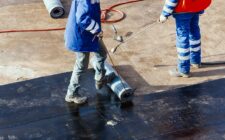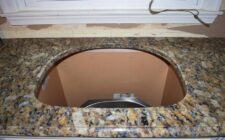Paving a driveway can be an expensive endeavor, but if you’re looking for a cost effective solution, you should consider the benefits of liquid rubber. Liquid rubber is a relatively new paving material that has been gaining popularity due to its affordability, durability, and versatility.
Liquid rubber is a mixture of polyurethane and other polymers that is applied in liquid form and then allowed to harden. It is quite a bit cheaper than asphalt, but it offers many of the same benefits, such as a smooth surface and excellent water drainage. It is also environmentally friendly, slip resistant, and resistant to cracking and other damage. With these benefits, it’s easy to see why liquid rubber is quickly becoming the preferred choice for paving driveways.
Cost Comparison
Liquid rubber is significantly less expensive than asphalt, making it a great option for those on a tight budget. While it may be less expensive initially, keep in mind that asphalt is a more durable material and may need to be replaced far less frequently—which will end up saving money in the long run. Liquid rubber may be a less expensive up-front solution, but you could end up paying more in the long run.
Durability
Liquid rubber is durable enough to be used just about anywhere, but it may not be the best choice for long-term, heavy-traffic areas. Since it is significantly less expensive than asphalt, it is best suited for areas that see moderate to light traffic. Where it really shines is in the versatility department. It can be applied to a variety of different surfaces, including driveways, parking lots, and even walkways.
Environmental Friendliness
Liquid rubber is a very environmentally friendly paving material, and it can even be recycled for more use. What’s more, it actually reduces carbon dioxide emissions when compared to asphalt, making it even more environmentally friendly.
Slip Resistant
The smooth surface of liquid rubber makes it slip resistant, keeping you and your family safer. A common misconception about this product is that it offers little to no traction, but this simply isn’t true; it actually has more traction than asphalt, it is less noisy and it’s also less visually obtrusive.
Resistance to Cracking
Liquid rubber is resistant to corrosion, bumps and dents, and other damage that can occur with asphalt. While this DIY solution is more resistant to damage than asphalt, it is worth noting that it is not completely immune. It can crack and break under certain extreme circumstances, just as any other paving material would.
How to Apply Liquid Rubber
Liquid rubber is typically applied to a driveway via a spraying process, which may sound a bit strange, but it is actually an efficient and ecological method that uses significantly less material than traditional paving methods.
- It can be applied to a variety of different surfaces, including soil, gravel, crushed stone, and asphalt.
- If you are looking to apply liquid rubber to an existing gravel or crushed stone driveway, you will need to first have the surface broken up and compacted.
- You can apply liquid rubber over asphalt, but you will need to seal any cracks and fill any holes first.
- Typically, 3-5 heavy coats are required, with ample drying and curing time in between, for the best results.
- 48 hours after the final application, cars and traffic over the driveway can resume.
Conclusion
With many benefits and low cost, it’s no surprise why liquid rubber is increasingly becoming more popular for DIYers who are repaving their driveway. While it is not the best choice for long-term, heavy-traffic areas, it is durable enough to be used just about anywhere. Liquid rubber is also significantly less expensive than asphalt, making it a great option for those on a tight budget. With these benefits, it’s easy to see why it’s the most popular solution currently on the market.
Need Even More Tips on DIY Home Improvement?
We’re here to help you by providing tips for all of your home improvement DIY project needs. Take a look at a few related guides we’ve published to see what other projects we can help you get done faster. Read More Articles About Liquid Rubber.




